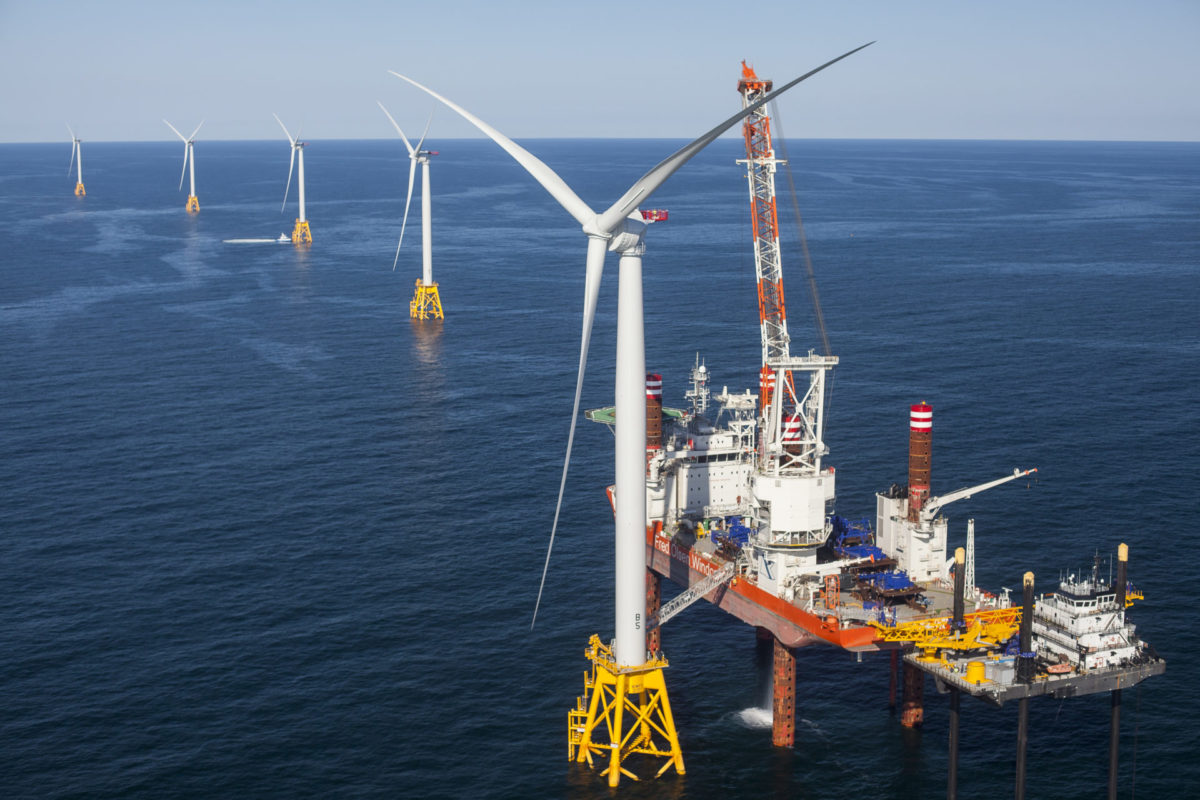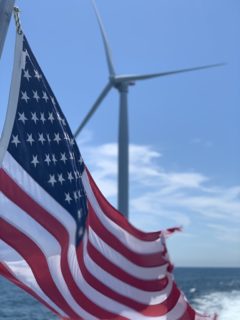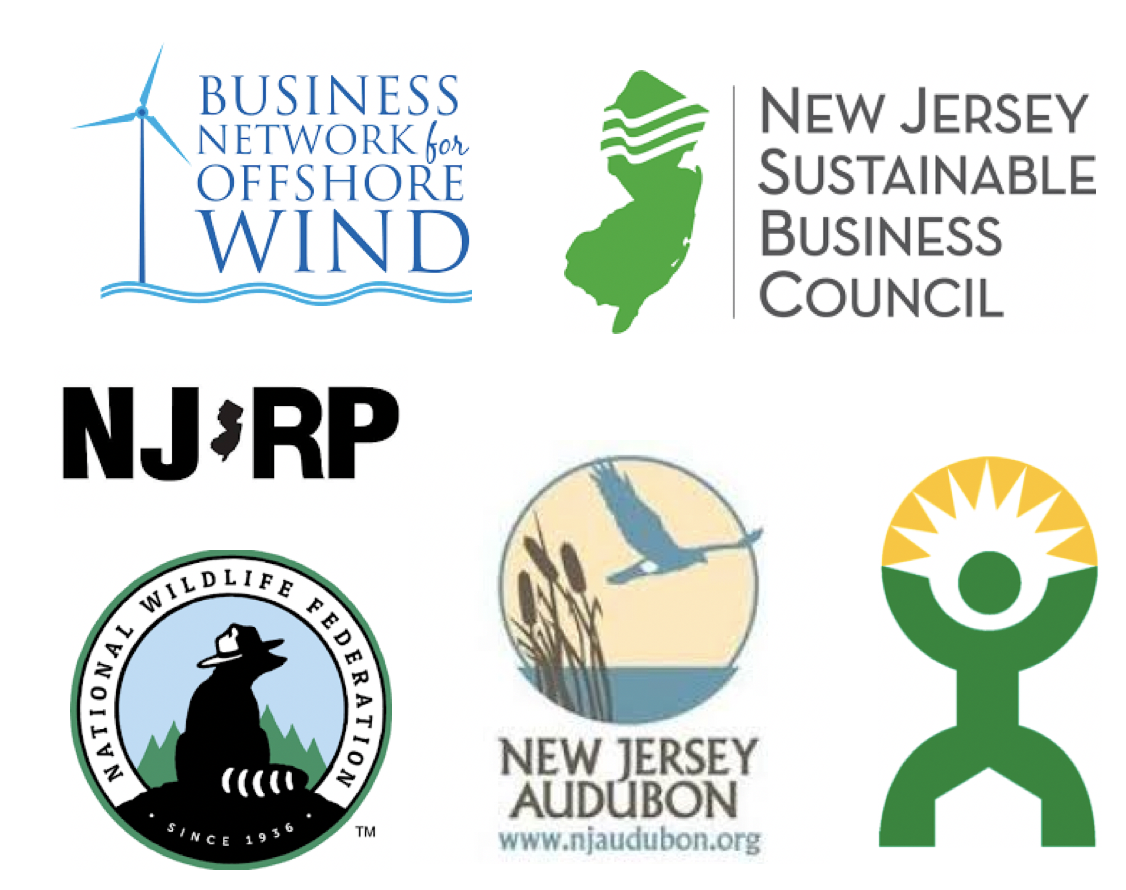
A Commitment to Action
This past year has been a strong one for clean energy in New Jersey. The state unveiled its draft plan to reach 100 percent clean energy by 2050, committed to rejoin the Northeast’s carbon trading program known as the Regional Greenhouse Gas Initiative, and recently approved what will be the largest offshore wind farm in the U.S.
The Ocean Wind project, which will sit about 15 miles off the coast of Atlantic City, is the state’s first offshore wind award—but it likely won’t be the last. New Jersey Governor Phil Murphy recently unveiled an executive order that sets a goal of deploying 7,500 megawatts (MW) of offshore wind by 2035.
The desire to transition New Jersey to clean energy drives the state’s offshore wind push, but so does the potential for new jobs and the opportunity for local businesses to be a part of the project supply chain. An average wind farm is projected to comprise about 44 turbines in the state and is expected to create 4,300 skilled, well-paying jobs and add $702 million to the economy.
The state’s forward-leaning approach to offshore wind is exciting, says Bill O’Hearn, outreach manager for the Business Network for Offshore Wind. His group is working on dual fronts: educating business owners about the opportunities while advocating for policies that support the industry’s growth. In 2018, Governor Murphy tasked the New Jersey Board of Public Utilities with offering future project solicitations in 2020 and 2022.
“That’s really a great thing to do, because it tells everybody—federal agencies, states, and developers—when these contracts are going to become available so they can plan for that,” O’Hearn says.
The Business Network is part of a diverse coalition working to advance offshore wind in the state, including the New Jersey Sustainable Business Council, New Jersey Work Environment Council (NJWEC), New Jersey Resource Project, National Wildlife Federation (NWF), and New Jersey Audubon Society. Their collaboration demonstrates the breadth of support for offshore wind development, from local businesses and labor unions to community and environmental groups.
“We see this as an opportunity to set up a new energy sector here in New Jersey, and we’re at the ground level right now,” says Debra Coyle McFadden, NJWEC’s executive director. “If we get this right, this could really be an economic boon for the state and a win for workers.”
The group’s Jersey Renews campaign has drawn more than 50 partners, including United Steelworkers and other labor groups. Along with the Business Network for Offshore Wind, NJWEC co-hosts the Time for Turbines annual conference for labor leaders, environmental advocates, government representatives, and industry leaders. The event has grown from a small half-day confab in 2017 to a packed house of nearly 250 attendees this past August.
Coyle McFadden’s group works to find the right balance between labor and environmental interests. “For example, it’s not enough to just build wind turbines in New Jersey,” she says. “You also have to prioritize a low-carbon supply chain that includes good union jobs.” The union jobs shouldn’t stop at the supply chain, but also include facility construction, maintenance and operation, procurement of infrastructure materials, etc.
She also points out the need to ensure job opportunities for traditionally marginalized communities—that includes creating workforce development training programs and making them accessible to those communities.
Making Room for Marine Life
For environmental advocates like Catherine Bowes at NWF, offshore wind is key in the transition to renewable energy—and the planning must include protections for sensitive marine species.
In the case of Ocean Wind, the turbines’ siting 15 miles offshore mitigates the danger to birds, which tend to feed and migrate closer to the shore. Farther out in deep water, the concerns turn to the endangered right whale, which can be harmed by the noise and shipping traffic wind farm construction will bring.
“For whales, the concern is truly only during that construction period,” Bowes says. But construction can be timed for months when the whales have migrated south for the winter, and other safeguards, such as noise mitigation and monitoring for nearby whales, can help mitigate impact.
Recreational fishing may see a boost from offshore wind, Bowes says, because the underwater turbine foundations can become artificial reefs that attract marine life. For commercial fisheries, turbine layout and compensation for lost time during construction can address concerns from that sector.
“For any project to be successful, there has to be a lot of conversation very early on to flesh all this out,” she says. “Every step of the way, there are concerns that could be managed better or worse. We feel confident that for all of the issues, there are solutions.”
In the meantime, industry advocates are focused on establishing a supply chain that can support not only construction and operation of New Jersey’s wind turbines, but also projects being developed across the entire eastern seaboard. Some 490 companies have joined a registry established by the Business Network for Offshore Wind and the New Jersey Economic Development Authority, an effort to ensure smaller suppliers like helicopter or boating operators can connect with other ones like engineering firms.
As the state finalizes its energy master plan, the coalition is also arguing for 2024 and 2026 to be added to the solicitation ladder.
“Why should we stop at 2022,” O’Hearn asks, “when we have until 2030 to maximize the impact we can have on climate change?

Addressing an Ongoing Crisis
For many New Jersey residents, the devastation wrought by Superstorm Sandy in 2012 brought a sense of immediacy to the state’s acute vulnerability in a changing climate. In the storm’s aftermath, housing and health care issues necessarily took precedence. But seven years on, long-term solutions such as offshore wind have become an important part of the conversation about how to address the ongoing crisis that involves more tidal flooding and severe weather.
“People see that we have to move to renewable energy,” says Amanda Devecka-Rinear, executive director of the New Jersey Resource Project (NJRP). “They see that we have to do something about climate change, not just raise our houses.”
NJRP has been raising awareness about offshore wind among both residents and policymakers in the four southeastern counties hardest hit by Sandy. Though only about a third of the storm’s survivors had heard about offshore wind coming to New Jersey in an NJRP survey this year, a majority are excited about the prospect and curious to learn more.
“We’re seeing a recognition that we need offshore wind if we’re going to do something about the challenges we face as a community,” Devecka-Rinear says. “It begins to take root and spread when you’re investing in community leaders and helping to educate them about it.”

“It’s incredibly inspiring to see this coalition, which includes business, labor, conservation, and frontline community groups, working together to bring offshore wind to New Jersey,” says Emily Enderle, Energy Foundation’s Senior Regional Director, Northeast. “Their success will bring economic, job, and health benefits, while also helping New Jersey play its part in preventing the most devastating effects of climate change.”

